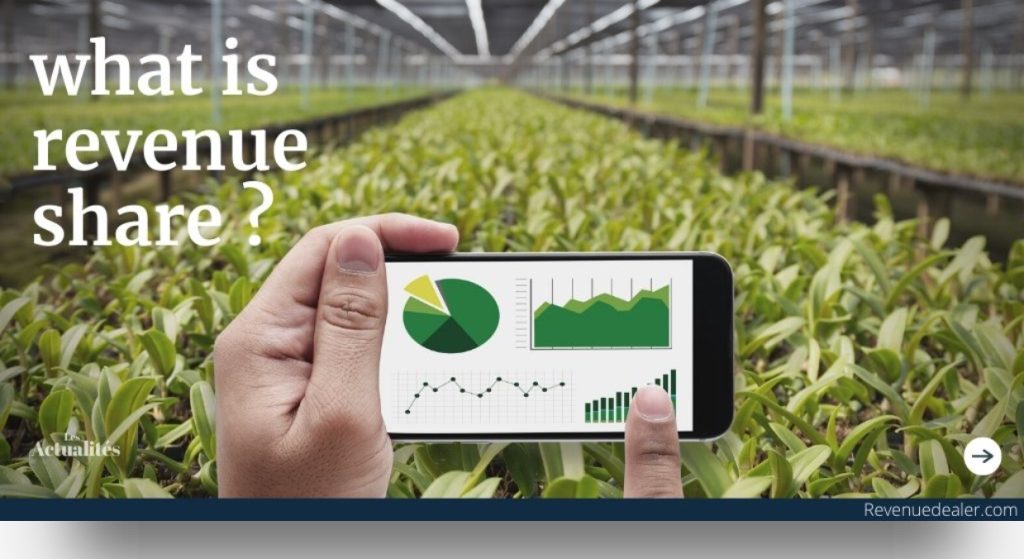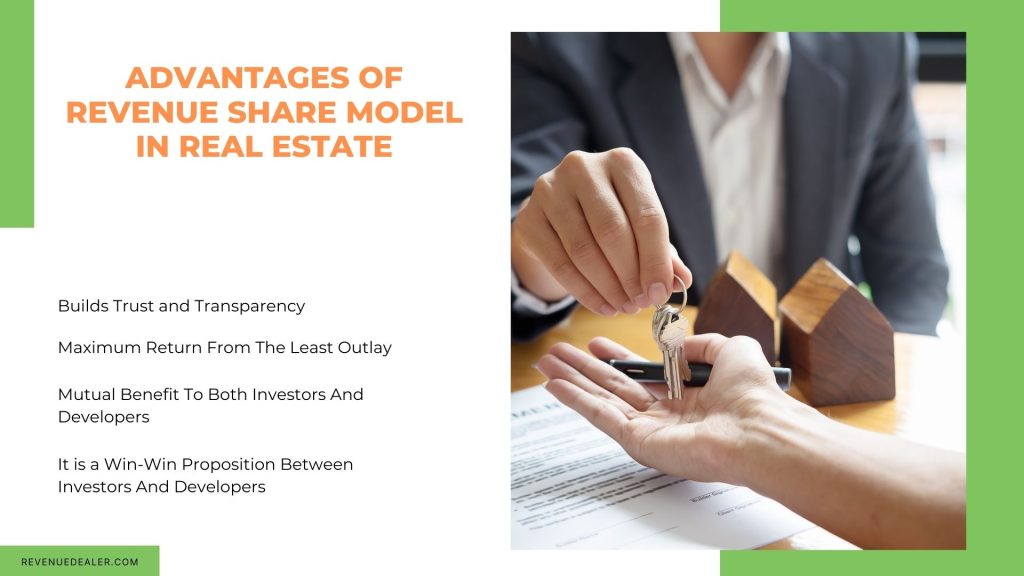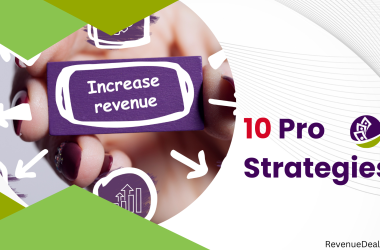The revenue share model is now most commonly used in real estate. It is a partnership between the landlord and owner where the landlord pays a certain percentage of net profits to the owner every month instead of paying them all at once.
The revenue share model can be applied by both parties (landlord and developer) in an agreement that can be either short-term or long-term. This article will discuss how it works, its advantages and disadvantages, and everything that needs to b addressed.
As you know, there are a lot of real estate investment options out there. Most investors use the traditional method of buying and holding real estate. Still, others choose to enter into an agreement that gives them a share of the revenue generated by their investment.
This is known as revenue sharing, and it can be an excellent way to earn passive income while working with other investors who have assembled properties with strong cash flow potential.
What Is Revenue Share | An Overview

Revenue share is a type of partnership where one party receives a percentage of revenue generated by another party. In real estate, it can be used to split profits or split costs.
For example, if someone with an investment property wants to raise funds for repairs without paying interest on their loan, they could opt for a revenue share model with their partner and profit from the rental income instead.
What Is a Revenue Share Model In Real Estate?
Revenue sharing is a contractual agreement between two parties to share revenue from the sale of a product or service. The first party contributes capital, and the second party contributes expertise and advice.
The first party takes a percentage of the profits to provide funds for development and marketing. The second party takes a portion of the profits upon completing the project.
This agreement is used in many industries outside real estate, such as software development, accounting services, consulting work, and even lending money through peer-to-peer platforms like Lending Club or Prosper.
Why Use Revenue Share Model In Real Estate?

The revenue share model is a powerful real estate investing strategy that can help you build wealth and passive income.
The premise behind revenue share is simple: you can invest in real estate without worrying about managing the property or finding tenants. The idea is that you pay a management company a small fee to handle all of this for you and then get a percentage of the monthly rent that the tenants pay.
For example, if you invest in an apartment building with ten units, each unit would have a tenant who pays $1000 monthly rent. You would receive 10% of those payments—or $100 per month—for life. Additionally, if the building appreciates over time, so makes your investment; it’s a win-win.
Using the revenue share model in real estate is a smart move for multiple reasons.
First of all, it allows you to make money while you sleep. You don’t have to be there and can focus on other areas of your life while making money.
Second, it’s a great way to get started as an investor. You can start small and grow your portfolio over time. You’ll make money if your tenants are paying their rent!
Thirdly, it’s easy to scale up or down depending on how much work you want to do. If you want more work, take on more tenants; if you want less work, take on fewer tenants who pay higher rents.
How To Implement Revenue Share Model In Real Estate Business?

The revenue share model is a widespread business model in real estate. In this model, investors purchase a property and then share the profits with the developer. The investor gets to keep all their investment, but they also get to share the profits with the developer.
The revenue share model can be implemented in many different ways depending on what the investor wants from their investment. Investors may wish to purchase a property and then sell it later for a profit while sharing some of those profits with their partners, or they may want to rent out their property and receive passive income from renting out their properties.
Another way investors can use this model is by purchasing multiple properties at once and then dividing up the profits among themselves based on how much each person invested into purchasing all of those properties together.
To implement a revenue share model in your real estate business, we must first consider a few key factors that we feel are vital to discuss with you.
The first thing you will want to do is determine what your goal is for the business. Are you looking for more investors? Do you want to expand your team? Do you want to bring more clients on board? Once you have an idea of your main objective, it will be easier for you to figure out how best to implement a revenue share model in this way.
The next thing that needs to be done is figuring out how much money each person needs and how much they are willing to give up. Both parties must agree based on their individual needs when implementing this arrangement.
This means that one person might need more money than another while giving up less or vice versa, depending on their situation at home or work; therefore, both parties need some form of balance built into their agreement.
So neither party feels shortchanged by their partner’s contribution towards building up this business together as partners rather than just employees (if that makes sense).
Advantages of Revenue Share Model in Real Estate

It is a Win-Win Proposition Between Investors And Developers
The Revenue Share Model is a win-win proposition between investors and developers. It’s beneficial to the investors and the developer as they get a good deal.
In this model, both sides are happy with their decision, and no one feels that they are being exploited or cheated.
Maximum Return From The Least Outlay
The revenue share model is a fantastic way to make money without needing to invest as much capital. This is because you only have to put up the cost of running the property and managing it, meaning that you can make more money with less outlay than other investments.
Additionally, since this type of investment does not require any initial start-up costs or additional funds beyond running costs, you will have more time on your hands to concentrate on other projects and spend more money on yourself.
Builds Trust and Transparency
The revenue share model builds trust and transparency between the developer and investor. The investor can see that the developer’s track record is good and can see exactly how their money is being used. In return, the developer has more incentive to ensure their project succeeds because they will earn money based on its performance.
Mutual Benefit To Both Investors And Developers
The revenue share model is beneficial not only to investors but also developers. The revenue share model allows developers to secure funding for their projects without having to take on a large debt load or lose equity in the project. Two significant benefits of this model are:
- Developers can secure funding for their projects while keeping control over their work product; and
- Investors get a great return on their investment because they are involved in the development process and have an opportunity to profit from other avenues with the developer.
No Maintenance Hassles Or Litigation Woes
As the landlord, you’ll never have to deal with any tenant issues. And you won’t be on the hook for any maintenance costs or repairs (unless the property itself caused them). This can be a significant advantage over traditional financing models. Where property owners are responsible for all such maintenance and repairs themselves.
You don’t have to face any hassles with contractors and other service providers. Because their services are not part of your revenue stream. You don’t have to worry about getting bids from multiple vendors, negotiating pricing, paying bills on time, and keeping everything organized. Which means less time spent doing paperwork and more time spent focusing on what matters: growing what you already have.
Risks of Revenue Share Model in Real Estate

Risk Of Earning Nothing
Another risk of revenue sharing is that you might earn nothing. Both parties will be taking on this risk. So it’s not just one side being exposed to the possibility of earning nothing. Revenue sharing can be risky for both parties because there is no income guarantee. You could lose money if the property is not profitable.
Investment Is Long Term and Not Liquid
Revenue sharing, as the name suggests, is a long-term investment. The investor participates actively in the business and receives a share of its profits over time. This can be great for an entrepreneur who needs capital to grow but doesn’t have access to traditional financing channels.
The investor must be comfortable with the fact that their investment isn’t liquid. They might not get their money back for months or even years after investing it in a revenue-sharing deal.
Exit Strategy Is Not Defined
In the revenue share model, there is no defined exit strategy i.e., whether there will be an IPO or any other type of exit.
When a company decides to make an initial public offering (IPO), its shares are available for trading. The listing process is carried out by an Underwriting Group consisting of investment banks and merchant bankers that help companies raise capital by selling their shares in IPOs.
Also Read our blogs:
A Comprehensive Guide To Revenue Sharing Business Model
Why You Need To Work With Real Estate Lead Generation Company
All Things Real Estate Affiliate Program
Why Real Estate Agents Love Revenue Share

Real estate agents are constantly looking for new ways to grow their businesses. That’s why they love revenue share programs. Which allow them to keep more of the profits made on selling a home.
Revenue shares incentivize real estate agents to sell more homes, which means they can make more money. They also help agents build their clientele—and keep them happy. Because the agents can offer them more services without charging more fees.
Revenue shares work by allowing the agent to keep a percentage of their client’s gross profits from each sale they make. The amount varies depending on how much time and effort was involved in making the sale. And where in the country it took place.
This program is excellent because it lets real estate agents work on commission. Without worrying about overhead costs like office space or utilities. It also gives clients peace of mind knowing that their agent isn’t going anywhere. Since they have no incentive to move up in the company hierarchy since there aren’t any titles available.
Lastly, Realtors who embrace revenue sharing can build a portfolio of high-value, highly-targeted leads while keeping their costs and margins high.
Traditional Real Estate Agent Retirement Plan Vs. Revenue Share Retirement Plan

Traditional Real Estate Agent Retirement Plan
The traditional real estate agent retirement plan is one you can only use if you’re a licensed real estate agent. If this is the case, then this retirement plan works very similarly to an account. In which money is put into an investment fund and will make money over time.
The benefit of this type of retirement plan is that it’s easy to use so long as your financial circumstances allow it. However, there are some disadvantages:
- You may not see much of a return on your investment until later in life
- If you need access to some of those funds before they reach maturity (when all earnings are unlocked). Then there are penalties associated with withdrawing them
Revenue Share Retirement Plan
Revenue share is a percentage of your total commission from a listing or sale. This is typically paid out over time rather than as a lump sum. For example, if you were to sell an $800,000 property. And received 3% of the sales price as your revenue share. You would receive $24,000 for it (at least in most cases).
The upside to using this type of retirement plan is that you can never lose money. As long as buyers are willing to pay more than what they owe on their mortgage payments. The downside is that if prices decrease during your retirement period. It could take longer for prices to go back up before your clients recoup their costs and make any profit themselves.
Conclusion
Revenue sharing is a common way to share profits in real estate deals, but it must be done carefully. It’s essential to choose the Revenue share model that best fits your needs and goals to avoid confusion and mistakes regarding payment.
If you find it challenging, then worry not because Revenue dealer is here to guide you and help you to boost your business and earn more by using their Revenue share model. Sign-up right now to get all the benefits we provide for any real estate business.









